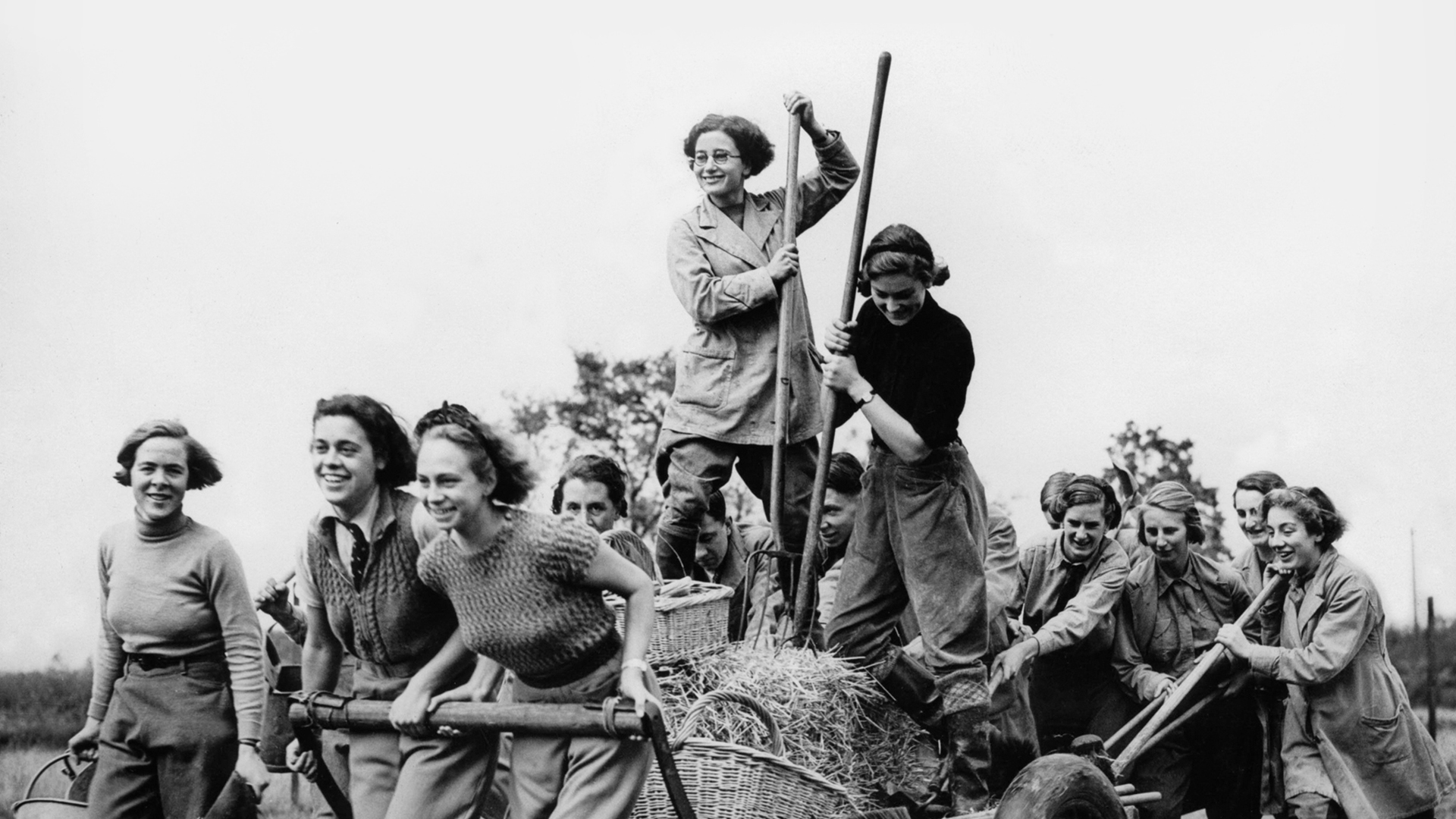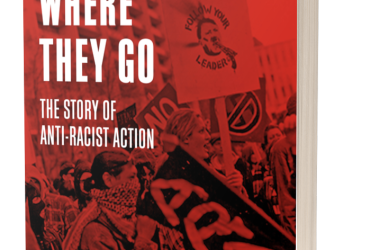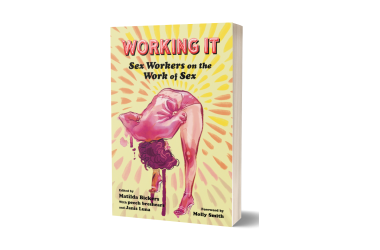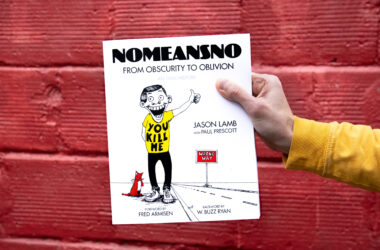
John Curl, author of For All the People: Uncovering the Hidden History of Cooperation, Cooperative Movements, and Communalism in America (PM Press, 2009) interviewed by Gabriel Kuhn. (September 2009)
Internationally, US society is often associated with rampant individualism. Your book portrays an impressive number of cooperative and communal projects throughout the country’s history. Can you sum up the most important chapters of this legacy?
The collectivity of North American Indians remains our deepest legacy, followed by the cooperative settlements and structures of the early colonists, and of every wave of immigrants to America from around the world. Communalism played an important role in the movement for social equity that arose in response to the industrial revolution, and also in the Abolitionist movement that ended slavery. Worker cooperatives were a key element in early labor unions, and grew into a national movement in the later 19th century. Between 1865 and 1888, there were at least 529 worker cooperatives in the US, in almost every region coast to coast. The Knights of Labor, the greatest American worker organization of the time, organized a chain of approximately 200 worker cooperatives that they planned to form the structure of an alternative economic system they called the Cooperative Commonwealth, based on workplace democracy, where they would abolish what they called “wage slavery.” The Knights at their peak approached a million members, making them the largest worker organization in the world. At the same time, small farmers were organizing an infrastructure of cooperatives through the Grange and later the Farmers Alliance. An historian called the Farmers Alliance cooperatives “the most ambitious counter-institutions ever undertaken by an American protest movement.” The Farmers Alliance had over 5 million members, including one and a quarter million African Americans. The Knights and the Farmers Alliance worked together. Decades later in response to the Great Depression of the 1930s, the Self-Help movement organized mutual aid and barter outside the failed financial system, involving over half a million people in different parts of the country. In the 1960s and ’70s a new generation reinvented collectivity, communalism, and worker cooperatives and called them the counterculture, which was a spontaneous grassroots movement involving millions of people. The current revival forms the latest and hopefully the most important chapter.
How
do these experiments relate to US individualism? Are we looking at two
distinct historical trajectories here, or is there less of a
contradiction than many might think?
When you join a cooperative or an intentional community you don’t surrender your individuality. On the contrary, cooperatives by their democratic nature empower individuals and strengthen their ability to pursue individual creativity. American small farmers have always been highly individualistic, yet in many parts of the US typically also belong to several cooperatives. Worker cooperative members are their own boss, and the economic independence this brings is the staff of individualism. Cooperatives are based on people power, which empowers each member individually. As the old Industrial Workers of the World (IWW) anthem said, “the union makes us strong.” Capitalist propaganda tries to link that economic system with the concepts of freedom, democracy, and individualism, but in truth capitalism is about funnelling wealth and power into the hands of a small elite, and disempowering everyone else. The official historians of capitalism glorify the entrepreneur-the businessman-and claim that the greatest community benefits derive from this. But the wage system is actually geared to making the community weak, and thereby less individualistic. The personification of the myth of the rugged American individual is the ruthless “robber baron” of the 19th century, who amasses his wealth from the blood of factory workers and later poses as a philanthropist dispensing gifts and largesse to charities and cultural institutions. In contrast, the historical trajectory of the American working people is paved with cooperation and collectivity, which for generations formed the material base for movements opposing the domination of capital and increasing freedom and democracy. It is through this activist opposition and their cooperative institutions that working peoples’ individualism expressed itself.
How do you distinguish cooperation from communalism? From a radical perspective, is one more important than the other?
Cooperatives are integrally intertwined in their larger communities. Communalism is the form of cooperation that includes residence, and therefore often involves an element of separation. Cooperatives are everywhere in civil society, which has its base in free association. Cooperatives are democratic associations organized to manage particular jobs or functions. Their ubiquity gives cooperatives greater power than intentional communities in terms of their potential as levers for broad radical social change. It is primarily worker cooperatives and related social enterprises that are at the core of this radical potential. They challenge the wage system, since cooperative members own and manage their businesses. People are integral to the cooperative, and not just labor that can be replaced by a machine or a different employee.
Another factor is that cooperatives are easier to join than intentional communities, since to become a member a person does not have to change residence, habits or behavior beyond the limited parameters of the cooperative. Mass society today is of course based on the single-family unit. If mass society were tribal, then intentional communities would be indistinguishable from the dominant social fabric. A cooperative on the other hand can be almost any association, business, organization providing goods or services, a music group, a neighborhood watch, a preschool play group, or any of millions of other possibilities. Many cooperatives have a low public profile, which can be seen as a weakness, but which also gives them power in that they are often flying entirely below the radar and wearing a cloak of invisibility.
Communalism and cooperation both offer microcosmic utopian visions that demonstrate the viability of the concepts. They embody critiques of society. Yet as a strategy of social transformation, communalism has demonstrated more fatal flaws than cooperatives. Back in the 1820s, 1840s, and 1960s, communal movements tried to transform society by attempting to organize networks of intentional cooperative communities. The idea that mass society could be transformed by everybody dropping out of it and into the new world quickly revealed its limitations. Only a comparatively small number ever joined an intentional community, while in some periods almost the entire population of a region belonged to cooperatives.
Have
the cooperative and communal traditions in the US ever posed a serious
threat to the dominant political order and to capitalism? Were they met
with strong political repression?
That happened several times.
The first time was in the late 19th century, and it changed the course of American history. The counter-institutions of the Knights of Labor and Farmers Alliance, which I already mentioned, were destroyed by the reaction of the old system. The Knights cooperatives were put out of business during the nationwide crackdown in the wake of the organization’s involvement in the May Day national strike for the 8-hour day in 1886 that ended in the Haymarket police riot. The destruction of the Knights and their cooperatives marked the triumph of industrial capitalism in the US. As an historian wrote, “American industrial relations and labor politics are exceptional because in 1886 and 1887 employers won the class struggle.” The Farmers Alliance cooperatives were destroyed economically a few years later by a combination of bankers and financiers, and that pushed the FA into organizing the Populist Party, which staged the most serious assault on the two-party electoral system in American history. The Populist Party was violently attacked by racists and vigilantes in many parts of the South.
In the early 20th century the Industrial Workers of the World (IWW) took up the cause to create a new cooperative economic system, but instead of organizing worker cooperatives like the fallen Knights, they planned to take over the existing industries through industrial unionism. The IWW was destroyed by police repression focused around their opposition to World War I.
The Self-Help Movement of the 1930s was destroyed by the government but not by government repression. It was undercut by New Deal work programs like the WPA, which offered a cash income to almost anybody at a time when the money system was stopped, while the co-ops offered only barter. The Roosevelt administration starved the Self-Help co-ops to death by refusing to qualify work in them as WPA work, and refusing any financial help to co-ops which sold the products they produced rather than barter them or make them for self use. The New Deal helped numerous rural cooperatives of different types, but few urban co-ops, and drew the line at worker cooperatives, which threatened the wage system.
The Peoples Food Systems of San Francisco and Minneapolis of the 1970s were victims of the last chapter of government repression-or I should say probably victims, because government guilt has never been definitively proven. In those cities and in others around the country, food-related cooperatives and collectives came together to try to set up an alternative system. The Food Systems could be seen as the culmination of the spontaneous movement known as the ’60s counterculture. As they became larger and more successful, they met the fate of many progressive groups in that period: they were disrupted and destabilized by individuals and small groups within their system. Although it has never been proven that the Food Systems were victims of government agents such as the Nixon administration’s Cointelpro which destroyed numerous progressive groups, many participants, particularly in San Francisco, were convinced that was the case.
What
is the situation today? Your book mentions how many cooperatives have
entered the mainstream. Do radical cooperative and communal potentials
remain?
The world is entering into a visionary period. People all over the planet are creatively reinvisioning the world economic system. The potential of radical cooperative and communal movements is greater now than at any time in history. Because the world economic system needs cooperatives to fill in the gaps, the movement is starting to become mainstream in some places; but that also embodies a new threat to the movement’s integrity and ability to fulfil its mission. Economic collapse, climate change, and population explosion have jolted many people into the realization that the current economic system is not geared to handle the upcoming crises of the 21st century. Unless we change, by all predictions the near future will include vast unemployment and marginalization, huge population movements, and devastation of numerous local economies. Unless we reinvent the world system, we will suffer catastrophes of a global magnitude. That has already been recognized by the United Nations, which in 2002 called on governments to form an alliance with the cooperative movement to grow the worker cooperative sector in every country to a magnitude where it can become a key mechanism in solving the worldwide problems of unemployment and poverty. The cooperative movement (which includes communalism) needs to cautiously welcome that alliance with government. Welcome because government is a counterweight to the private and corporate sector’s ability to generate resources, which the movement sorely needs. Most of the world’s wealth and resources, which embody the ability to shape the world, have been privatized. The movement needs to accept access to resources from government cautiously, without being dominated by it. The movement must retain its independence to really affect social change, because government will not do it. Government support involves paternalism, and paternalism strangles and destroys mutual aid. The movement must deal with governments from a position of strength. Fortunately there is another counterbalance in civil society: nonprofits, NGOs, community groups, spiritually-based organizations, and similar institutions. There already is a growing alliance between the cooperative movement and many of these organizations, and they are increasingly including support of social enterprises in their missions. The International Labour Organization (ILO), representing the labor movements of the world, has joined the coalition. While much of the labor movement in the last century was hostile to worker cooperatives because they blur the line between employer and employee, now the ILO is promoting worker cooperatives, because labor unions as we have known them have been marginalized. The overarching goal of the labor movement has always been to improve the lives of the community of working people, but that has been limited by a narrow focus on increasing their members’ salaries and benefits. By supporting worker cooperatives and other social enterprises, labor unions are returning to their original mission of struggling for broad social equity. As unions increasingly support the larger working population, the community should in turn increasingly support labor struggles, as they did in the 1930s. Worker cooperatives are strong in small industries and businesses, but organizing larger firms is out of reach of the meagre resources that the movement can gather, so the union movement is integral to the larger struggle for workplace democracy.
What is the future role of cooperative and communal projects in radical politics? What are the prospects?
Radical politics is not defined by elections or demonstrations. It involves innumerable everyday interactions. Governments and elections make up only a small fraction of politics, which are part of all human group activities. Politics are the processes by which groups make decisions. The dominant political form of today’s society is hierarchy: authoritarian command structures of power elites. Cooperation, collectivity, and communalism in contrast are based on free association of equals in unhierarchical democratic structures. They embody the opposition to the dominant paradigm, and mirror the ends they’re working toward. The internal structures and methods of all truly radical organizations need to reflect their ends if they ever really want to reach them. The idea that radical organizations must take on hierarchical structures in order to effectively oppose the hierarchy of society, is a sham and a delusion. Any apparent success of such an organization is hollow and sets the real movement back. The counter-institutions built through radical politics always have to reflect the goals of social justice and equity. Cooperatives, collectives, and intentional communities do this by extending democracy to the economic sphere. They are a conscience to radical politics, and help to keep it focused on its long-term mission instead of getting sidetracked by short-term apparent gains. Radical groups organized according to the structures of collective democracy are cooperatives themselves. Radical politics by its very nature is a cooperative project.






